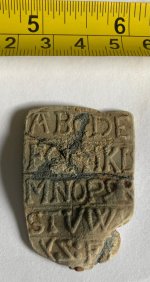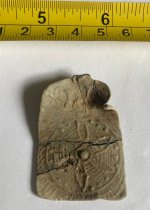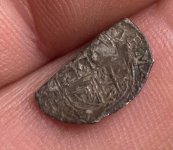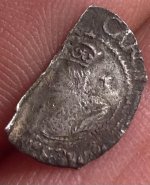Urien of Rheged
Full Member
Well you live and you learn as they say. And today I learned what a Horn book is.
At first I thought it was another rolled up piece of lead trash until noticing lettering just as it was entering the compartment where all the recycling is destined for.
I carefully unrolled it without breaking it up to find a floral design on the inner side.
A quick Google search out in the field revealed it's a Horn book given to kids back in the days (from the 14th century) before schooling was a thing to improve literacy among the common folk
I'm thinking this one is early 17th century especially so as half a Charles I penny came up not 10 yards away. But if anyone disagrees please do pipe up. I am no expert and appreciate that finds close to each other do not mean they are contempory.
Found in The county of Lancashire, Northern England on pasture using the equinox 600 field mode 1
At first I thought it was another rolled up piece of lead trash until noticing lettering just as it was entering the compartment where all the recycling is destined for.
I carefully unrolled it without breaking it up to find a floral design on the inner side.
A quick Google search out in the field revealed it's a Horn book given to kids back in the days (from the 14th century) before schooling was a thing to improve literacy among the common folk
I'm thinking this one is early 17th century especially so as half a Charles I penny came up not 10 yards away. But if anyone disagrees please do pipe up. I am no expert and appreciate that finds close to each other do not mean they are contempory.
Found in The county of Lancashire, Northern England on pasture using the equinox 600 field mode 1
Attachments
Upvote
15







